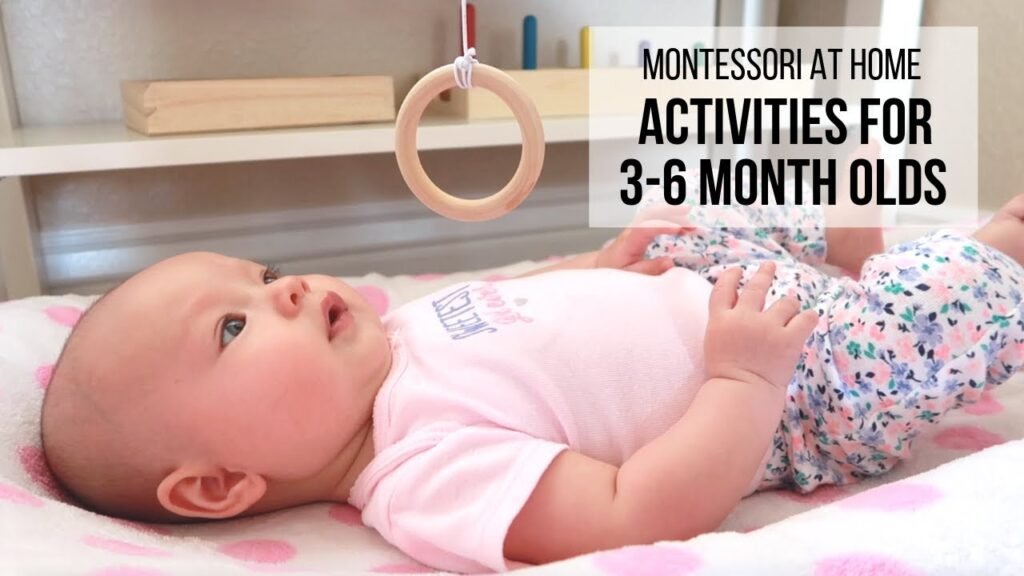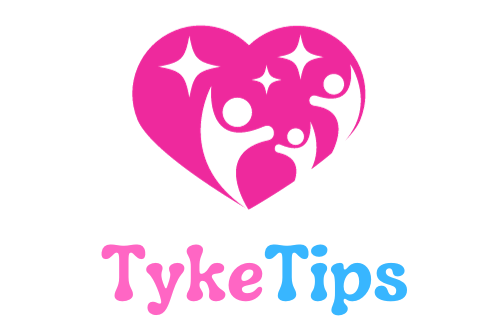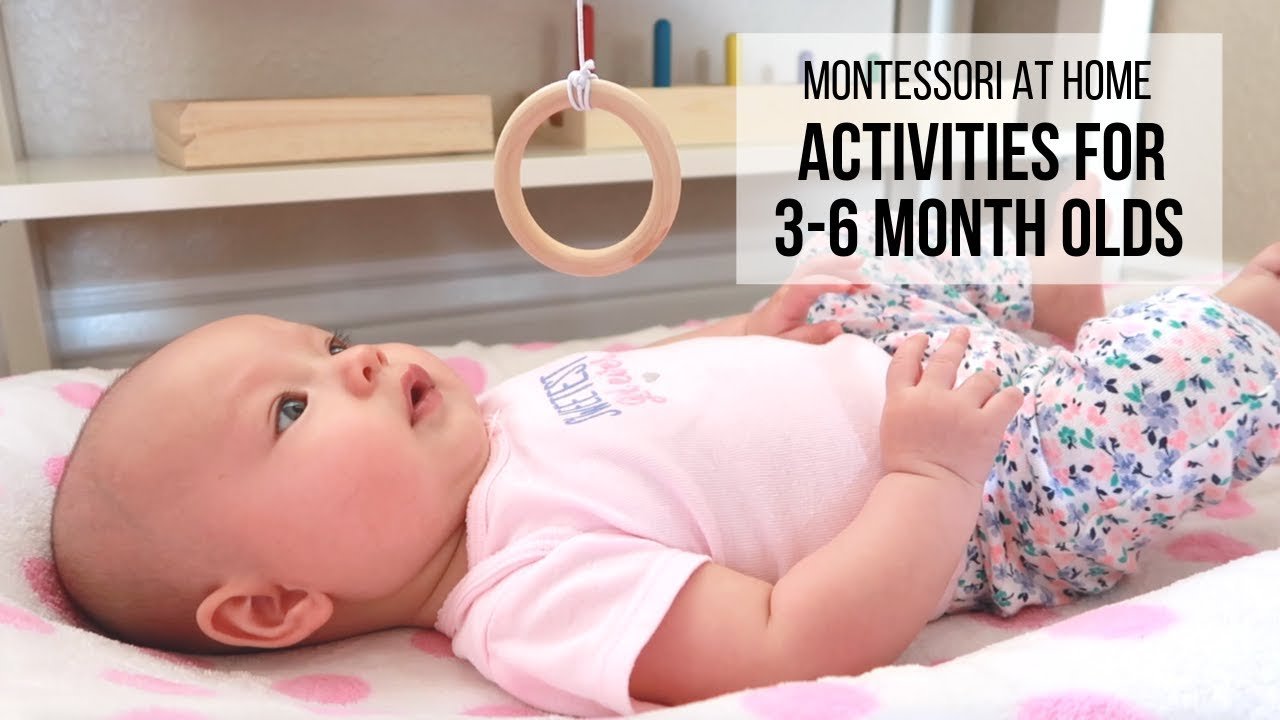Hi there! If you have a little one aged between 3 to 6 months, and you’re looking for some engaging and stimulating activities to try at home, then this article is perfect for you. Ashley, a mom of two girls, shares some wonderful Montessori activities specifically designed for babies at this age. From visual stimulation to sensory exploration, these activities are not only fun but also help in your baby’s development.
Between the ages of 3 to 6 months, babies are beginning to show more interest in their surroundings and are working on their hand control. From high-contrast cards to Montessori mobiles, there are plenty of sensory experiences that can be introduced at this stage. These activities not only provide entertainment but also help in your baby’s cognitive and physical growth. So, if you’re a busy parent looking to implement Montessori philosophies in your parenting journey, give these activities a try with your little one today!
High-Contrast Cards
When looking for activities to engage your baby aged 3 to 6 months, high-contrast cards can be a fantastic option. These cards are great for visual stimulation, allowing your baby to focus and concentrate on the patterns and shapes displayed. You can easily find printable high-contrast card sets online to introduce this activity to your little one for optimal effect. As your baby grows and becomes more aware of their surroundings, these cards can be placed strategically within their line of sight during tummy time or playtime to enhance their visual experience.
Montessori Mobiles
Montessori mobiles are specially designed to engage babies with gentle movement and contrasting colors. These mobiles help attract your baby’s attention and encourage their focus and tracking skills. One popular montessori mobile is the Gobbi mobile, which is part of a series of mobiles presented to infants from birth. Hanging the Gobbi mobile low enough allows your baby to reach and interact with the dangling objects, aiding in their visual development and hand-eye coordination.
Crinkly Taggi Blanket
A crinkly Taggi blanket is a wonderful sensory item for your baby to explore. With its crinkly sounds and various textures, this blanket provides tactile stimulation and sensory exploration. The different textures and ribbons on the blanket allow your baby to experience touch in a unique and engaging way. The crinkly noise produced by the blanket as your baby handles it adds another layer of sensory input, making this a delightful item for sensory development and play.

Wooden and Silk Teether
For teething babies, a wooden and silk teether can be a valuable item to have on hand. Made from natural and safe materials, this teether provides relief from teething discomfort while promoting tactile development. The wooden part of the teether is easy for little hands to grab onto, and the smooth surface allows babies to chew and explore different textures. The silk blanket tied around the teether adds an extra sensory element to the experience, making it a favorite for many babies during their teething phase.
Treasure Baskets
Introducing treasure baskets to your baby’s playtime can offer them a diverse range of objects to explore. These baskets consist of various items of different shapes, sizes, and textures for babies to discover and engage with. You can create themed treasure baskets or mix and match objects to create a diverse sensory experience for your baby. By providing a variety of items to explore, treasure baskets encourage sensory exploration, curiosity, and fine motor skills development in young infants.
Different Textured Balls
Engage your baby in tactile exploration and sensory development with different textured balls. These balls come in a variety of textures, including bumps, ridges, and smooth surfaces, providing a multi-sensory experience for your little one. During tummy time or playtime, you can present a selection of textured balls for your baby to touch, feel, and explore. This tactile stimulation helps in developing your baby’s sensory awareness and fine motor skills as they grasp and interact with the different textures.
Single Sensory Balls
Single sensory balls are easy for babies to grasp and manipulate, making them an excellent toy for young infants. These balls come in bright colors and different textures, providing sensory stimulation and engagement for your baby. With features like bumps, ridges, and crinkly surfaces, single sensory balls offer a range of sensory experiences for your baby to explore. Encouraging your baby to reach, grasp, and play with these balls can enhance their motor skills and sensory development.
Bell Rattle
Introduce your baby to sound exploration and cause-and-effect relationships with a bell rattle. This toy allows babies to shake and handle the rattle, creating sounds that capture their attention and curiosity. The bell rattle stimulates auditory senses and encourages babies to explore the link between their actions and the resulting sounds. This interactive play with a bell rattle can aid in developing your baby’s cognitive understanding and sensory processing skills in a fun and engaging way.
Wooden Toys
Wooden toys are durable and eco-friendly alternatives for baby playtime. These toys provide safe and engaging options for babies to explore and manipulate. Wooden toys promote fine motor skills development, creativity, and imaginative play in young children. By offering wooden toys to your baby, you provide them with opportunities for open-ended play and sensory exploration in a natural and safe environment. Additionally, wooden toys are long-lasting and sustainable choices for environmentally conscious parents.
Reading Time
Bonding with your baby through reading is a wonderful way to foster language development and build a strong parent-child relationship. Choose books with clear pictures and simple words to capture your baby’s attention and engage them in the reading experience. Reading with your baby from a young age not only enhances their language skills but also promotes cognitive development, imagination, and emotional bonding. Make reading time a special and enjoyable activity for you and your baby to share together, creating lasting memories and a love for books from an early age.

